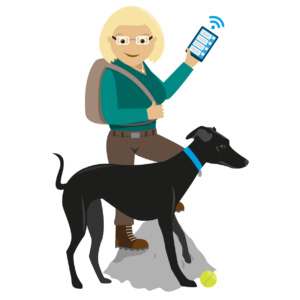Should PRs be doing more to promote the benefits of earned media?
Time to read: 3 minutes
Tech PR lead Debbie Smith looks to balance the more subtle benefits of earned media against the instant gratification of the click through…
So you’ve just achieved two great pieces of coverage for your client. You send them the links and pat yourself on the back. Then you get a reply from their SEO expert: “But one piece doesn’t link to the website at all, and the other only has a link at the bottom.”
They go on to explain that for SEO purposes it’s good to get links, but ideally these links would be towards the top of articles to increase click-throughs.
Resisting the temptation to throw your coffee at your screen in exasperation, you take a deep breath and explain PR 101: the difference between earned, owned and paid media.
This is not the only time I’ve had to explain earned media in recent weeks. So I’ve been thinking about why the question is being asked. Although it may seem glaringly obvious to those of us who’ve spent our careers in B2B PR, perhaps the convergence of different channels has muddied the waters for some marketeers?
It’s not that PRs don’t understand the value of SEO and the value of obtaining links back to the client’s site, it’s simply that earned media is first and foremost the tool to build credibility, increase brand trust and manage reputation.
First, let’s clarify what we’re talking about.
- Paid media: you pay for visibility or reach through advertising, advertorial, PPC or affiliate marketing. So you have complete control, but it’s the least credible. Ultimately you are paying to get your audience’s attention.
- Owned media: includes your website, your blogs, your newsletters and your social media channels, where you control both channel and content. This is ideal for education and demonstrating thought leadership. So no money is changing hands but it’s still you explaining to the world why you are so great.
- Earned media: third party objective endorsement, i.e. someone else is talking about you as an expert, and no money has changed hands. This includes media coverage obtained through PR, where a journalist has covered the story because in their view it’s newsworthy, not because you’ve paid for the coverage. To obtain this you need strong content, whether it’s a product that’s truly innovative, an opinion which provides new and informed views or a piece of thought leadership – which is where owned thought leadership content is valuable, as it can be repurposed for PR.
The great benefit of earned media is the credibility it brings which the other two routes can’t provide.
However, the downside of this is that you don’t get to dictate to the journalists where to put a link back to your client’s site, or indeed if one is there at all, depending on their editorial policy. You certainly don’t go back to a publication and ask for a link to be added or you’ll be promptly referred – with a few choice words – to their advertising department, and they’ll be unlikely to feel inclined to write about your clients again.
Where it gets blurry is when earned media becomes ‘online word of mouth’, including shares and reposts, content picked up by third party sites and media developed through partners and influencers.
Say you post on your company’s LinkedIn page about your new blog (owned) or latest piece of press coverage (earned) – when these are shared, they are both ‘online conversations’, even though the content has originated in different ways. Are posts from partners truly earned, or based on a mutually beneficial relationship i.e. owned? And while tech and fintech analysts (i.e. influencers) review products and provide editorial independence, the ASA has taken many so-called consumer influencers to task for not making clear when content has been paid for.
There’s a tendency to class all click-throughs as equal. Perhaps that’s true for buying trainers. It also makes reporting more straightforward! But in the world of B2B, the clicks driven by third party objective endorsements are surely the most likely to generate real interest and preference.
The journalists we work with pride themselves on their editorial integrity. A discussion on a journalist and PR social media group this week made that abundantly clear. So they’ll only cover material that in their view has earned its place on their websites. And we’ll continue to focus on obtaining that earned media, and other third party objective endorsement, as well as on generating the strong owned content that drives it. We’ll celebrate when journalists write about our clients because we know there is more to building credibility, increasing brand trust and managing reputation than including a back link.
Where we sit in the digital marketing mix


